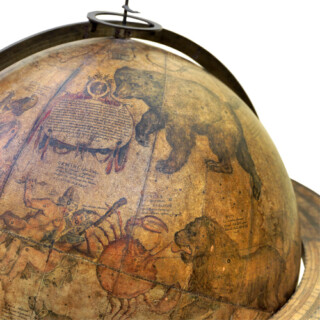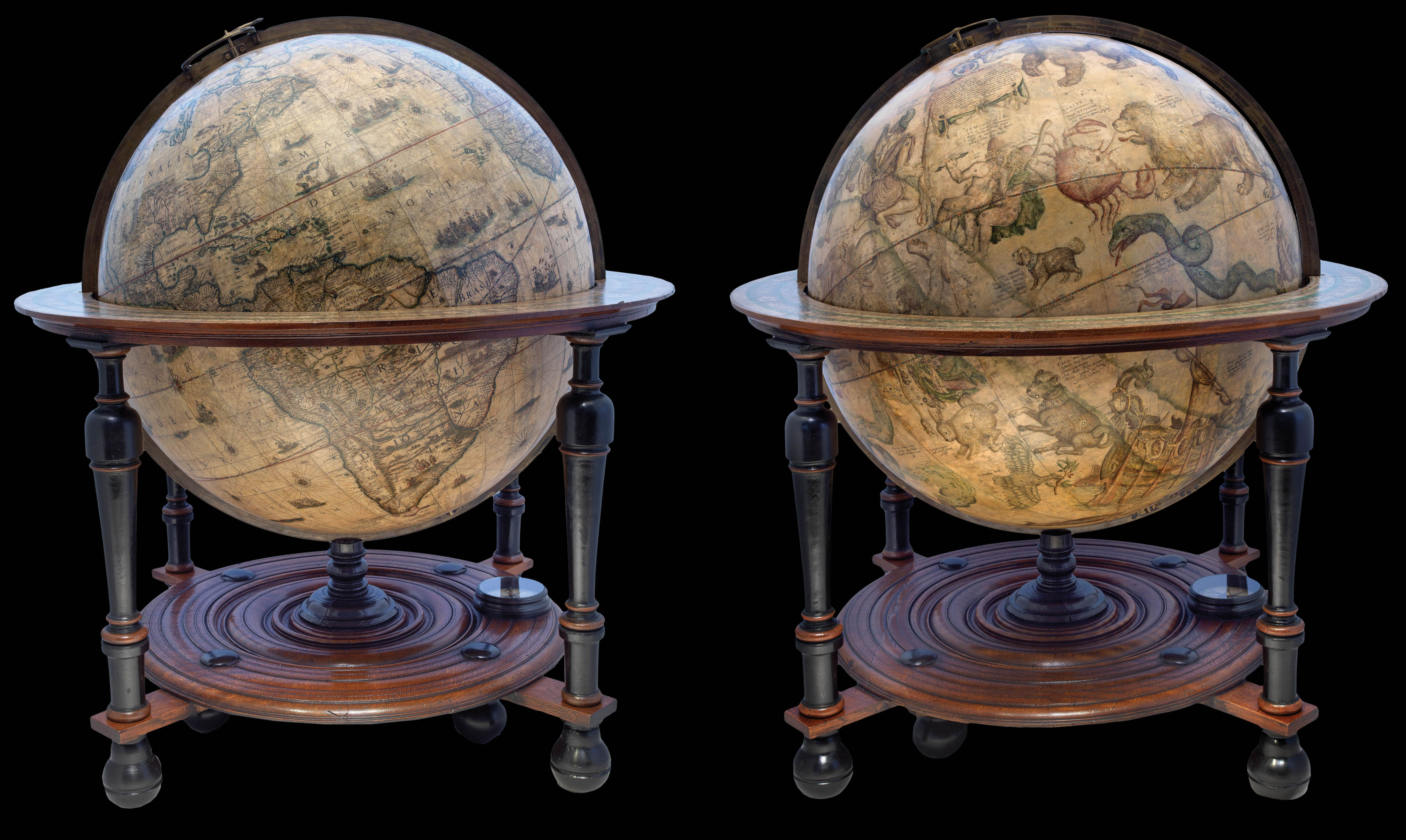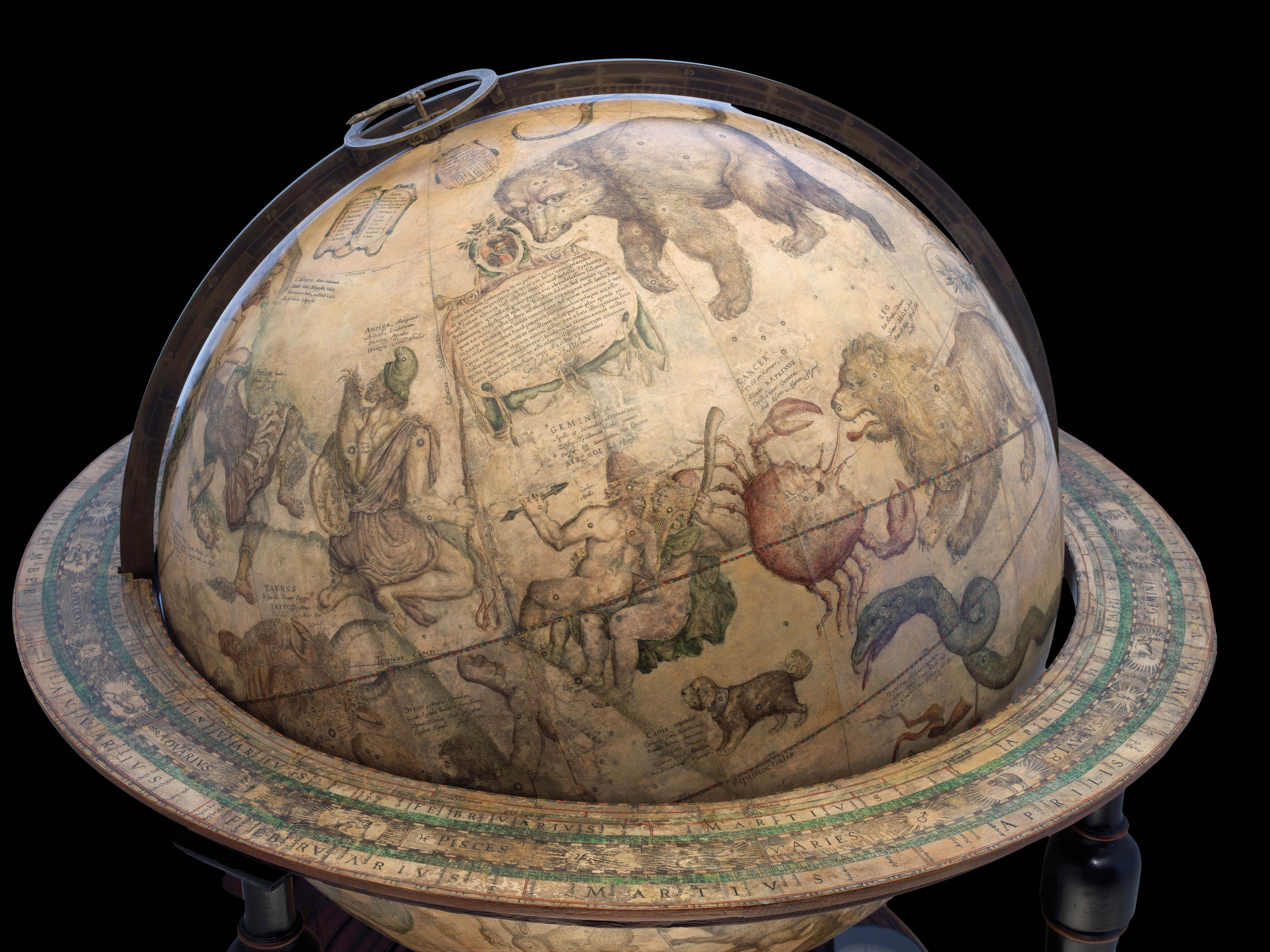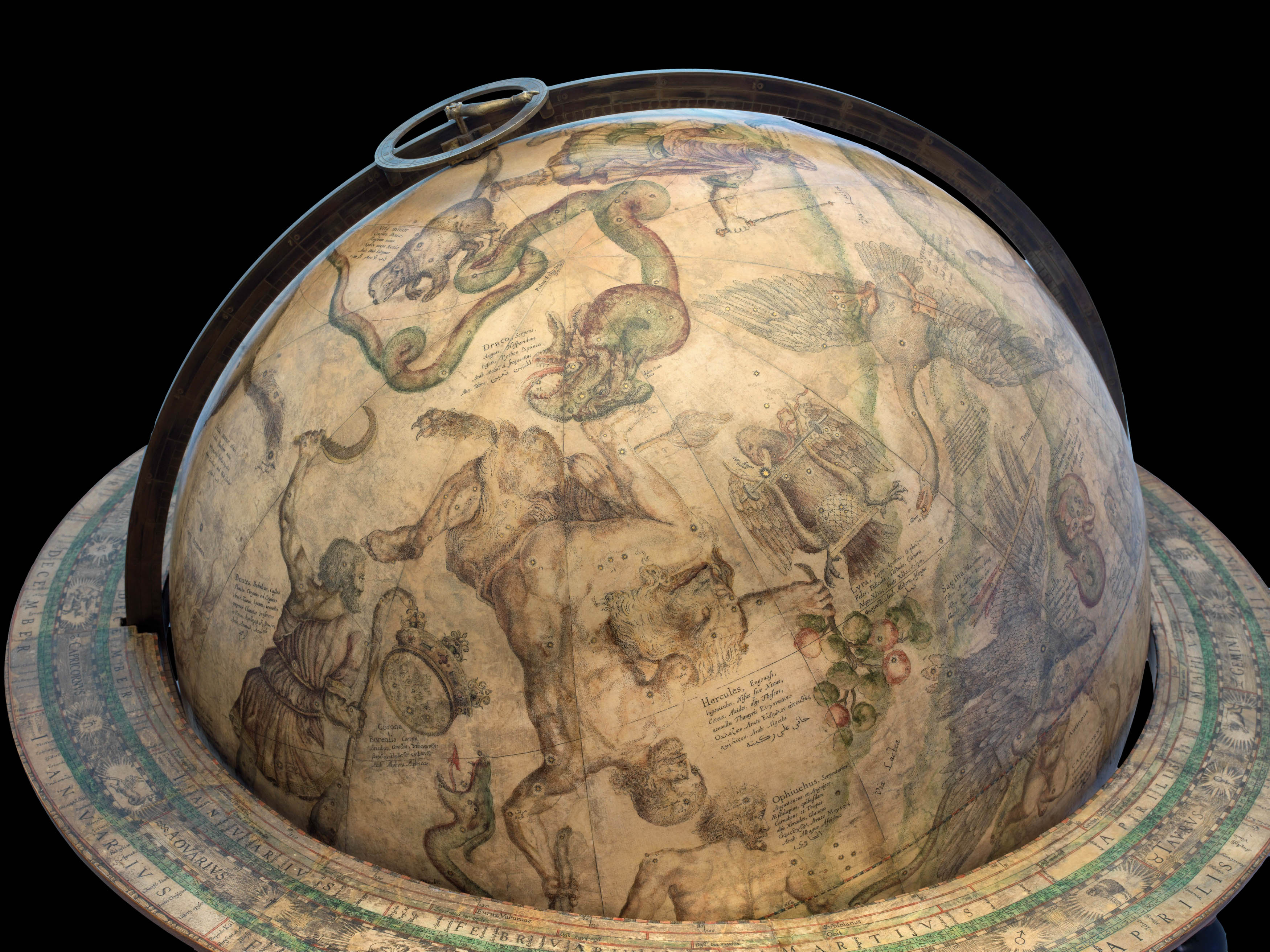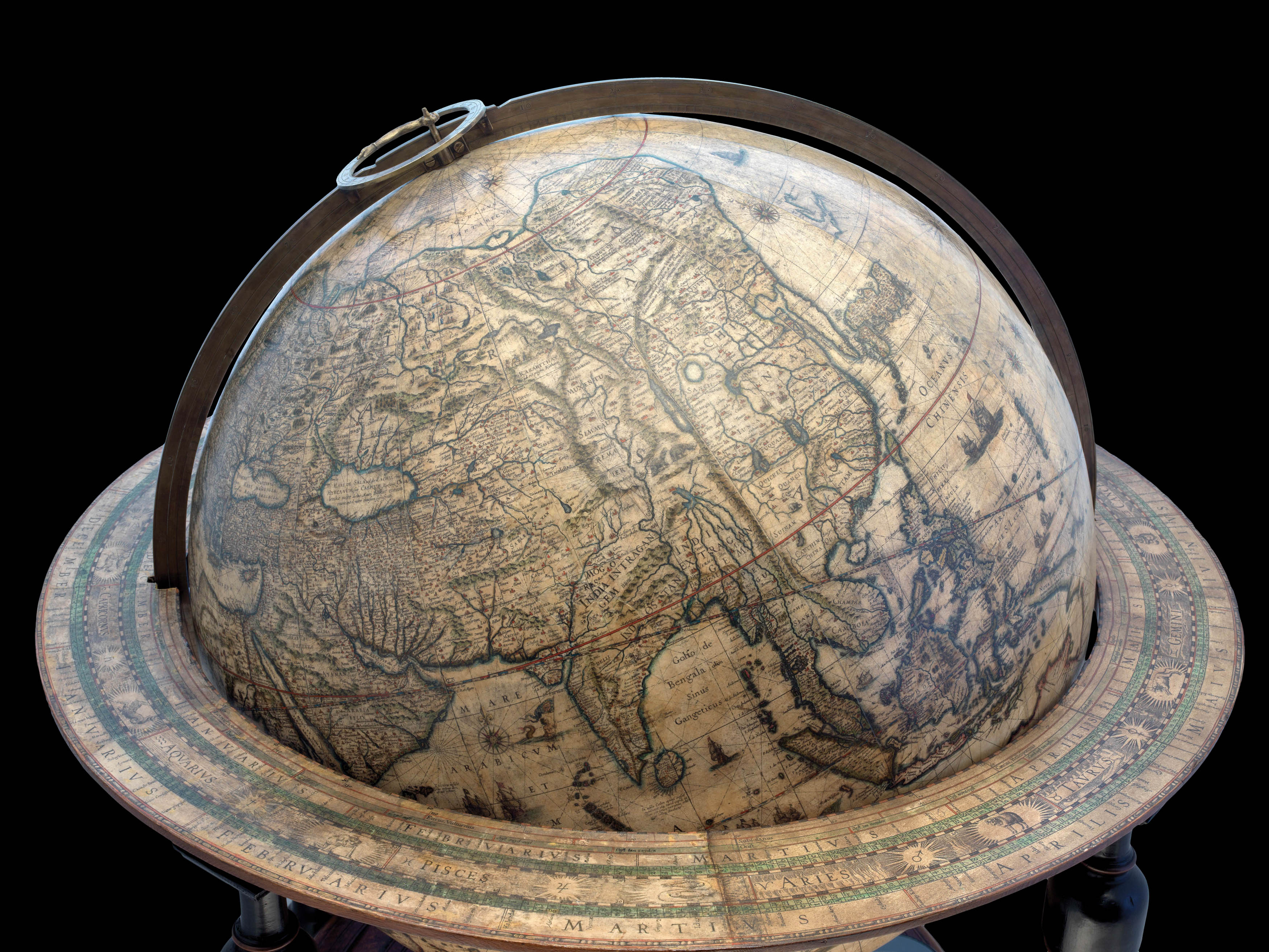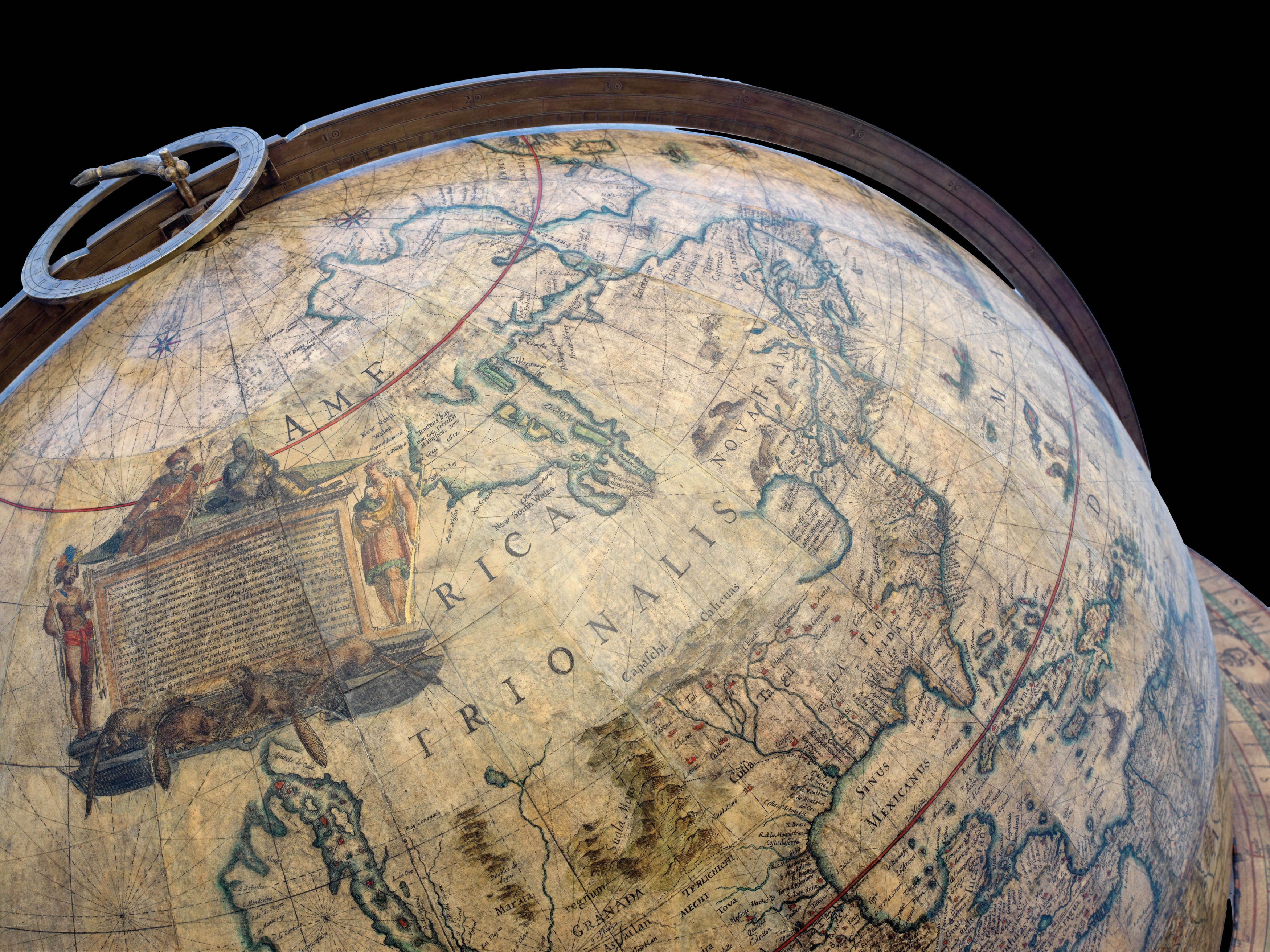The apotheosis of the Golden Age of Dutch cartography
Globus Orbis Terrae.
[Amsterdam,
Joan Blaeu,
c1645-48].
Terrestrial and celestial globes, the terrestrial globe with 36 hand-coloured engraved half gores, with two polar calottes, the celestial globe with 24 hand-coloured engraved half gores, with two polar calottes, rotating on brass pinions within a brass meridian ring with graduated scale, each set into a seventeenth century Dutch wooden base with ebonised baluster supports, bun feet and central column, with an engraved horizon ring, adumbrating scales, calendar, almanacs etc. With minor nicks and scratches to several parts of the printed surface, as is inevitable for a globe of this scale and period.
Diameter: 680mm (26 inches).
15767
notes:
Willem Janszoon Blaeu's 26-inch globes are the apotheosis of Dutch Golden Age cartography. Their size and grandeur stand testimony to the confidence and wealth of a great maritime and trading nation at the height of its powers.
"These globes were not merely the largest globes ever made in Amsterdam, and even the world's largest up to that time, and virtually until the end of the seventeenth century, they were also representations of enormous human achievement - an ext...
"These globes were not merely the largest globes ever made in Amsterdam, and even the world's largest up to that time, and virtually until the end of the seventeenth century, they were also representations of enormous human achievement - an ext...
bibliography:
Dekker GLB0130; van der Krogt, Globi Neerlandici BLA V, pp.176-187; van der Krogt, The Most Magnificent and Largest Globes of Blaeu, the World's Greatest Globe Maker (Houten: HES, 2001).
provenance:
Provenance
1. Collection of Franz Ritter von Hauslab (1798-1883), Austrian General and cartographer.
2. The Princely Collections of Liechtenstein. The Liechtenstein Library and art collection formed one of the richest private collections in the world, founded by Hartmann II of Liechtenstein in the sixteenth century. After the Principality of Liechtenstein was formed in 1719, subsequent heads of the ruling family expanded and enriched the collection. Upon Hauslab's death in the late nineteenth century, Prince Johann II of Liechtenstein acquired his materials for the price of 155,000 Austrian gulden, and added them to the Library, then located in Vienna. Following the Second World War, the Princely House of Liechtenstein sold the majority of the materials from the Hauslab collection, retaining only the rarest items: the Blaeu globes. These remained in the keeping of the family until 2008.
1. Collection of Franz Ritter von Hauslab (1798-1883), Austrian General and cartographer.
2. The Princely Collections of Liechtenstein. The Liechtenstein Library and art collection formed one of the richest private collections in the world, founded by Hartmann II of Liechtenstein in the sixteenth century. After the Principality of Liechtenstein was formed in 1719, subsequent heads of the ruling family expanded and enriched the collection. Upon Hauslab's death in the late nineteenth century, Prince Johann II of Liechtenstein acquired his materials for the price of 155,000 Austrian gulden, and added them to the Library, then located in Vienna. Following the Second World War, the Princely House of Liechtenstein sold the majority of the materials from the Hauslab collection, retaining only the rarest items: the Blaeu globes. These remained in the keeping of the family until 2008.






